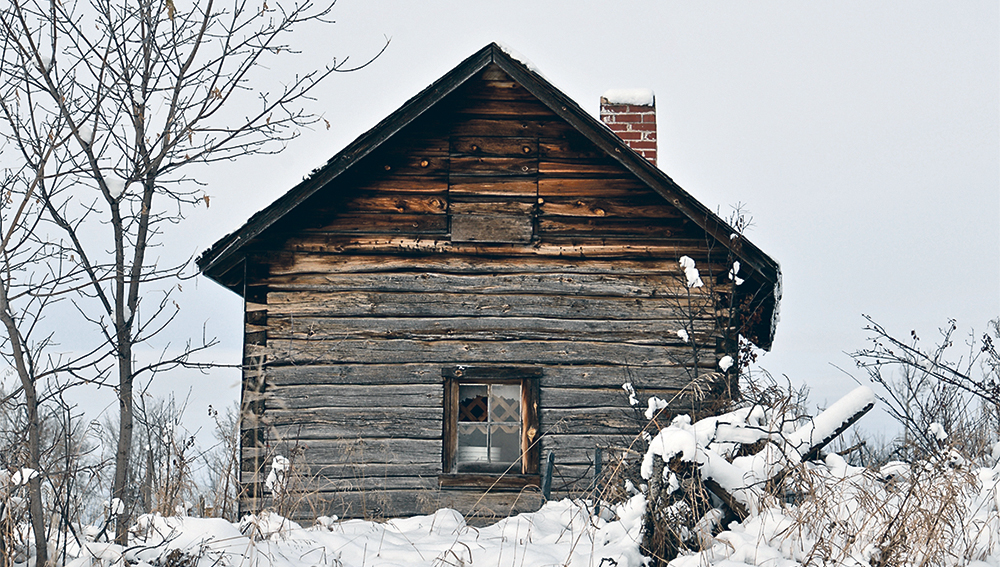Saunas were among the first things these early pioneers built when they arrived in Alberta; some are still functional
SYLVAN LAKE, Alta. — Nestled in a bluff of trees in a farmer’s field just west of town on Highway 11A is a small weathered wooden structure. At first glance one would assume it’s an old granary, but the red brick chimney protruding from the centre of the roof indicates otherwise.
An up-close inspection reveals two rooms. A wooden bench sits along one wall inside the entry. A solid door with a leather handle leads to the second larger room. A squat dust-covered, rock-filled metal stove and three layers of wood seating surrounded by dark moisture-stained walls reveals the building’s true purpose as a Finnish sauna.
Finnish people were among the many Scandinavians in the late 19th and early 20th centuries who immigrated to Canada. Some came from the north-central United States, where they had initially settled after leaving Finland and then left because of economic depression and the lure of free land. Others came directly from Finland to escape the turmoil of the First World War and the subsequent Finnish Civil War of 1918.
Most Finns were known to settle apart from each other in Alberta, but numerous Finnish settlers took up land at Sylvan Lake. The climate and geography, with lakes and stands of heavy timber, were similar to their homeland.

The Finnish people brought their culture with them, a huge part of which is the sauna, a small room or building used as a hot-air or steam bath for cleansing and refreshing the body. Sauna is a Finnish word pronounced SA-oo-na. The health benefits of sauna are well documented and include toxin removal through sweating, muscle relaxation, improved circulation, stress reduction and endorphin production.
Retired Sylvan Lake farmer Roy Mattson, 85, grew up with the sauna. His grandparents, Finnish immigrants Matt and Maria (Mary) Mattson, established their homestead at Sylvan Lake, known then as Snake Lake, in 1901. They came by way of Belt, Montana, where they had lived for a time.
“I didn’t know what a bath was until I was 15,” he said, explaining that a big pot of water would warm on the stove for washing while cold water was kept for dousing pre-heated rocks to create the steam.
Read Also

Fuel rebate rule change will affect taxes and AgriStability
The federal government recently announced updates to the fuel rebates that farmers have been receiving since 2019-20.
“We used to have a lot of sauna visitors on Saturday night. They’d come with their little bundle of clothes and a towel.”
He said that when groups attended, the men and women would sauna separately. When it was just family, everyone would go together.
Mattson said the sauna was generally used weekly, but it was a daily necessity during harvest “to sweat out all that oats and barley itch.”
The Mattson sauna sits just a few yards from the farmhouse where Roy’s son, Steve Mattson, now lives. Roy and his wife, Marie, retired to Sylvan Lake in 2011.
Scratched into the poured concrete step outside the sauna is “1948,” which Roy said was when it was relocated closer to the house.
“My parents got tired of packing water.”
He estimated it was built about 30 years earlier.
For a time the sauna was home to the family when the main house was destroyed by fire in 1952.
Steve runs the farm now, which includes the original quarter section that his great-grandparents homesteaded. The Mattsons received the Alberta Century Farm & Ranch Award in 2001 for their 100 year accomplishment.
The sauna is still used regularly.
“We were in it Saturday night”, Steve said, who reinforced his father’s earlier comment — “And during harvest, every night.”
Steve has fond memories of spending time with his grandfather, Emil, Roy’s father.
“We’d do sauna, then watch Hockey Night In Canada.”
Steve said people who got overheated would cool down with a refreshing dip in the snow and then head back into the steam.
“Later we’d have a big bowl of salty popcorn,” he said, to replace the salts lost through perspiration.
The men are aware of several other on-farm saunas close by. One sits on their own property down by the lake a half mile or so away through a snowed-n field. A couple others, although no longer in use, can be found within a couple miles on farms owned by descendants of other Finnish immigrants. Add in the one nestled in the bluff of trees near town, and that’s five within a relatively small area.
“Just about every Finnish family had a sauna,” Roy said.















